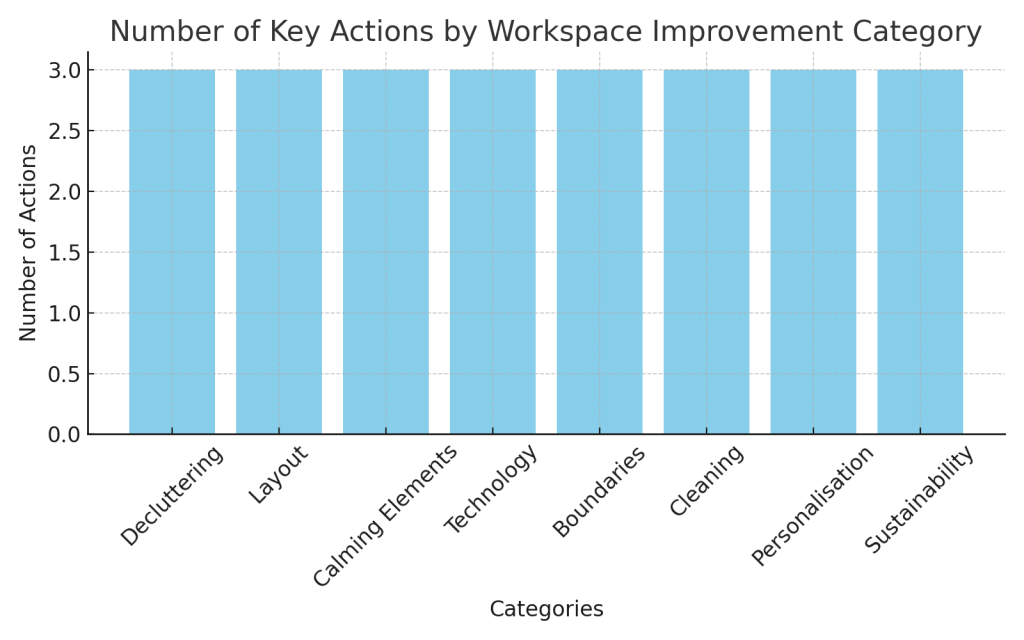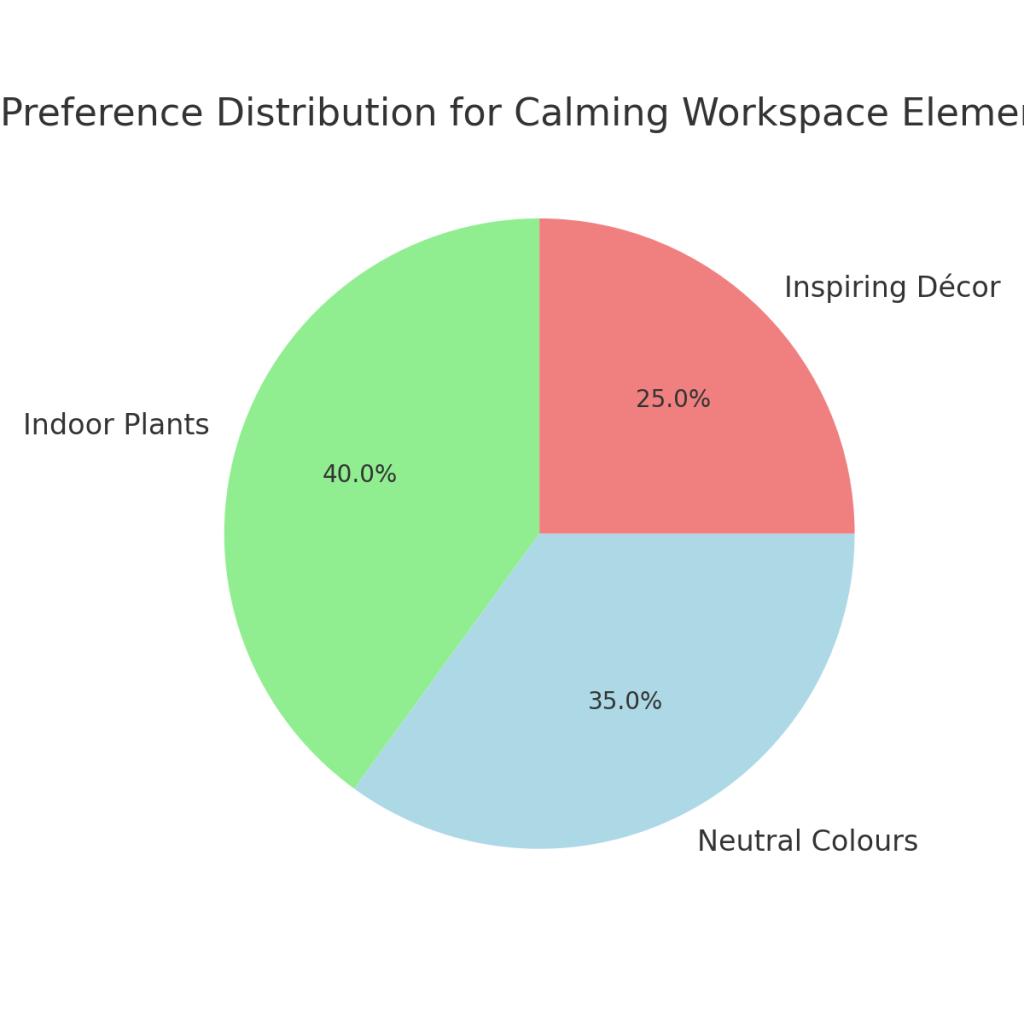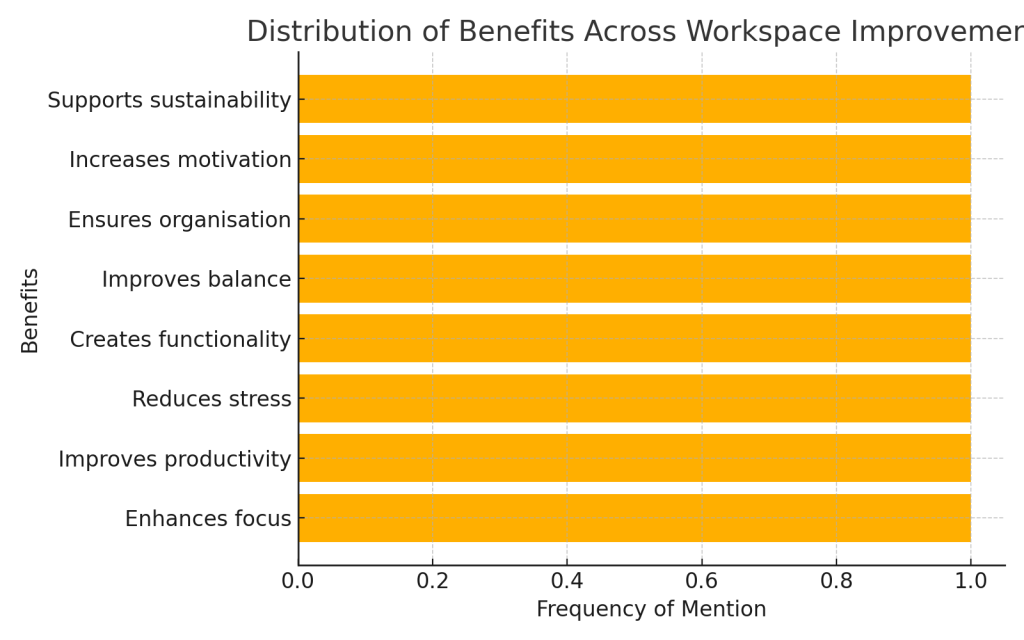In a world filled with distractions, Create a Calm and Organised Workspace to enhance focus and productivity. A thoughtfully designed environment not only boosts efficiency but also promotes mental well-being, ensuring you can tackle tasks with clarity. Whether you’re working from home or in an office setting, an organised workspace can help you stay on top of your responsibilities and reduce stress. For those navigating remote work or hybrid setups, the right workspace design can make all the difference in maintaining a healthy work-life balance. Here’s a comprehensive guide to crafting a workspace that works for you.
Declutter and Simplify
The first step in creating an organised workspace is removing unnecessary items. Clutter not only takes up physical space but also creates mental chaos. Begin by sorting through your belongings and keeping only what you use regularly. Items that don’t serve a purpose should be stored away or discarded. A tidy desk is a productive desk. Invest in practical storage solutions like desk organisers, filing cabinets, or wall-mounted shelves to keep items off your workspace. Use cable organisers to manage cords and keep them out of sight. Simplicity is key—embrace a minimalist approach to avoid overwhelming your space.

Optimise Your Workspace Layout
The layout of your workspace can significantly impact your productivity. Choose a setup that allows you to work comfortably and efficiently. If possible, position your desk near a window to benefit from natural light, which enhances focus and reduces eye strain. For those without access to ample daylight, opt for high-quality lighting solutions that mimic natural light. Ergonomics are equally important. Invest in a supportive chair and adjust your desk height to ensure proper posture. Arrange your frequently used items within arm’s reach to minimise unnecessary movement. A functional layout not only enhances organisation but also contributes to a stress-free environment.

Incorporate Calming Elements
A workspace that fosters calmness is essential for maintaining focus and reducing stress. Indoor plants are a fantastic addition, as they improve air quality and add a touch of nature to your environment. Choose low-maintenance plants like succulents, pothos, or peace lilies for an effortless green touch. Soothing colours can also make a difference. Incorporate neutral tones or soft blues and greens into your workspace through your furniture, décor, or even wall paint. Adding personal touches like artwork or motivational quotes can inspire creativity while maintaining a professional atmosphere.

Streamline Your Technology
A well-organised workspace requires efficient and reliable technology. Declutter your desk by opting for wireless devices such as keyboards, mice, and headphones. This not only eliminates cable clutter but also creates a cleaner, more streamlined look. Invest in a cable management system to keep cords neatly tucked away. A dual-monitor setup can be beneficial for multitasking, while noise-cancelling headphones help you stay focused in noisy environments. Ensure your devices are up to date and strategically placed to reduce repetitive strain.
Set Clear Work-Life Boundaries
For those working from home, creating a clear distinction between work and personal life is essential. Dedicate a specific area in your home to serve as your workspace. This could be a separate room or simply a corner of a larger room with clear boundaries, such as a room divider or strategically placed furniture. Avoid working from your bed or couch, as this blurs the line between relaxation and productivity. At the end of the workday, tidy up your space and store work-related items out of sight. This routine signals the end of your work hours and helps you transition to personal time more effectively.
Maintain a Regular Cleaning Routine
Consistency is key to maintaining an organised workspace. Dedicate a few minutes each day to tidy your desk, organise papers, and reset your space for the next day. Regular maintenance prevents clutter from piling up and ensures your workspace remains a productive environment. In addition to physical cleaning, don’t forget to declutter your digital workspace. Organise files, clear your desktop, and back up important data to keep your virtual space as organised as your physical one.
Add a Personal Touch
While functionality is important, adding personal elements to your workspace can make it more inviting. Incorporate meaningful items such as photos, artwork, or decorative accents that reflect your personality and inspire you. Be mindful not to overcrowd your space with too many personal items, as this can undermine your organisational efforts. Strike a balance between adding character and maintaining a professional, clutter-free environment.
Create a Sustainable Workspace
Sustainability is increasingly important in workspace design. Choose eco-friendly materials and invest in durable furniture that will stand the test of time. Incorporate energy-efficient lighting and reduce paper waste by opting for digital solutions where possible. A sustainable workspace not only benefits the environment but also contributes to a sense of purpose and mindfulness in your daily work routine.
Final Thoughts
A calm and organised workspace is more than just a place to work—it’s an environment that supports your mental clarity, creativity, and overall well-being. By decluttering, optimising your layout, and incorporating calming elements, you can transform your workspace into a productivity powerhouse. Regular maintenance and a touch of personalisation will ensure it remains a space you enjoy working in every day. Start implementing these strategies today and experience the difference an organised workspace can make in your life.
| Aspect | Key Actions | Benefits |
|---|---|---|
| Decluttering | Remove unused items, use storage solutions like organisers and shelves. | Enhances focus by reducing distractions. |
| Workspace Layout | Choose ergonomic furniture, position desk near natural light, arrange essentials within reach. | Improves productivity and comfort. |
| Calming Elements | Add indoor plants, use neutral tones or calming colours, include inspiring décor. | Reduces stress and enhances mental clarity. |
| Technology Organisation | Opt for wireless devices, manage cables with organisers, use dual monitors if needed. | Creates a clean and functional environment. |
| Work-Life Boundaries | Dedicate a separate workspace, avoid working from relaxation areas, establish end-of-day routines. | Improves balance and prevents burnout. |
| Cleaning Routine | Daily desk cleaning, organise papers, maintain digital workspace by decluttering files. | Ensures workspace remains organised and inviting. |
| Personalisation | Add meaningful décor like photos or art, avoid overcrowding to maintain functionality. | Increases motivation and enjoyment in the workspace. |
| Sustainability | Use eco-friendly furniture, reduce paper waste, incorporate energy-efficient lighting. | Supports environmental consciousness and mindfulness. |



